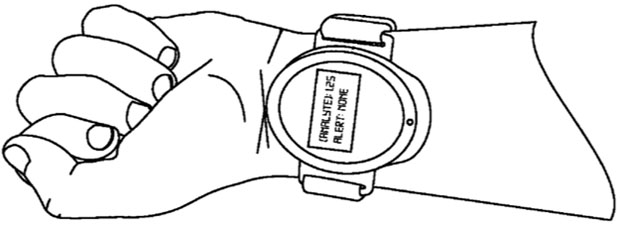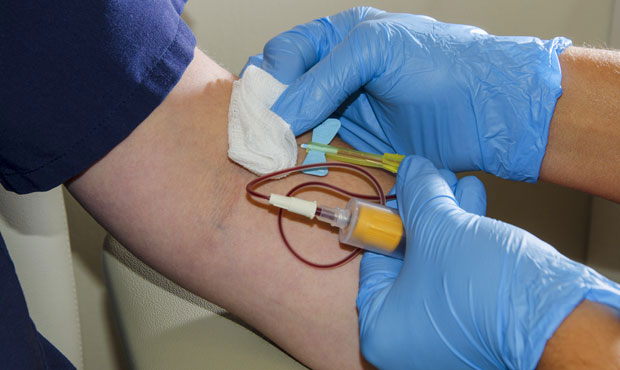Google has filed for a patent on needle-free blood-drawing technology, described in a USPTO application published last week.
Application 20150342509 suggests four potential implementations of the technology, including its use in a device that has an evacuated negative-pressure barrel with a membrane sealing an aperture at the far end containing an accelerator barrel.
Upon activating a trigger, pressurized gas would shoot a microparticle within the accelerator barrel to subsonic speeds.
The microparticle would consist of nano-sized gold particles bound with a biodegradable matrix consisting of polylactic-co-glycolic acid.
That microparticle would pierce the membrane and a user’s skin, drawing a drop of blood, which would be sucked up by the negative-pressure barrel.
The apparatus could be incorporated in a handheld or wearable device.

“Anything that’s noninvasive and more user-friendly and works has the potential to have a significant impact on reaching more members of the public to participate in screening procedures and tests towards greater preventive health and earlier disease state confirmation and management,” Miraculins VP of Sales and Marketing Paul Moreau told TechNewsWorld.
Advantages of the Technology
“Serving the diabetic community would be advantageous, both for Google, due to the size of the market, and for patients, for its ease of use,” said Shane Walker, a medical technology analyst at IHS.
Some 347 million people worldwide are affected by diabetes, and the World Health organization predicts it will become the seventh leading cause of death in the world by 2030, according to a paper he co-authored. In 2014, revenues from blood glucose meter sales totaled US$440 million worldwide.
However, Walker questioned whether enough blood would be drawn using Google’s method to provide reliable readings.
Noninvasive glucose blood testing “has been the Holy Grail of blood testing diagnostics forever,” remarked Venkat Rajan, global director of the visionary healthcare program at Frost & Sullivan.
Technology that measures blood glucose levels from the eye, from tears, from sweat and from infrared scanning exist, but the results they get “are never as accurate as a simple blood test offers that lets you modify your insulin dosage appropriately,” he told TechNewsWorld. “The key is to administer the correct dosage of insulin.”
Where Google’s Tech Might be Used
Google might tie in this device to a glucose-sensing contact lens it’s developing with Novartis, Rajan suggested, to triangulate blood glucose readings for greater accuracy.
The Google technology likely would be used to mark blood sugar level trends rather than to give accurate assessments of a user’s blood sugar levels at any given time, he said.
“The results would let you understand how your blood sugar levels fluctuate throughout the day, so it could be used for folks who are prediabetic, or even to test the impact of a medication so doctors could see whether the dosage is appropriate and figure out the best time to administer a drug,” Rajan said.
Instead of marketing the technology to consumers, Google could offer it to pharmaceutical firms, which could use it in drug trials or for other commercial uses, he suggested.
That might fit in with the wearable health sensor Google X is working on for cardiac and activity tracking. It’s a clinical-grade sensor for investigational use rather than the consumer market, and Google will be using it in clinical studies to see whether a continuous stream of medical-grade measurements of biological signals might be useful to physicians and researchers.
To be worn on the wrist, this sensor would continuously measure the wearer’s pulse, activity level and skin temperature.
It also will be able to take an EKG and sense environmental information such as light and noise levels.
“In general, medication effectiveness across a range of different conditions is tested through blood draws,” IHS’s Walker told TechNewsWorld. “The potential [of Google’s needle-free technology] goes well beyond diabetes — as long as the system’s proven safe and reliable.”























































